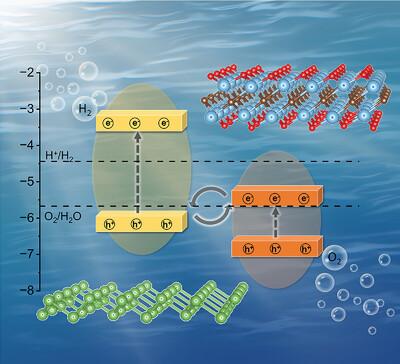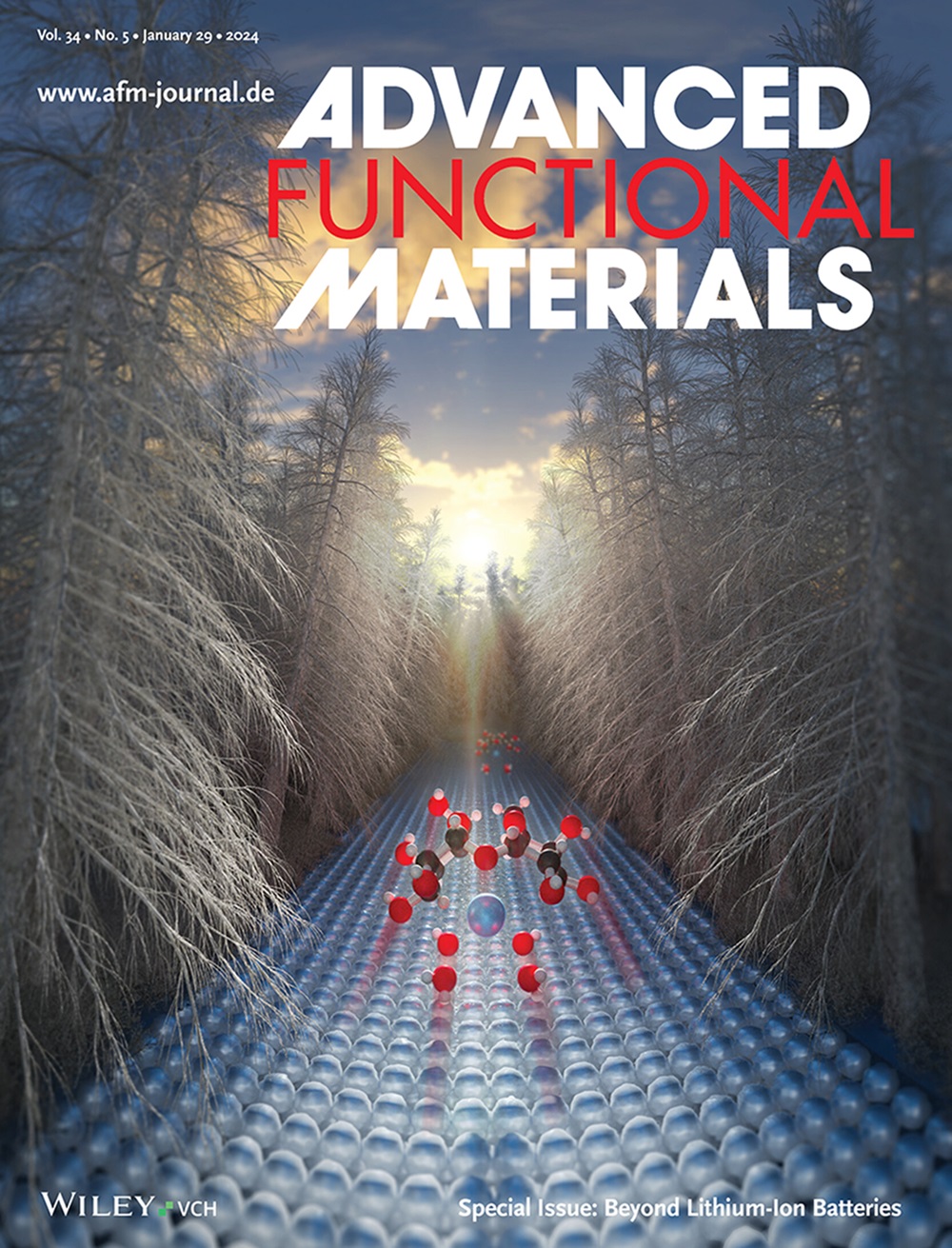Arsenene/Ti2CO2 Heterojunction as a Promising Z-Scheme Photocatalyst for Overall Water Splitting
IF 18.5
1区 材料科学
Q1 CHEMISTRY, MULTIDISCIPLINARY
引用次数: 0
Abstract
In order to address imminent energy and environmental challenges, photocatalytic water splitting emerges as a promising way for harnessing solar radiation to generate clean chemical energy. 2D arsenene (β-As) has notable catalytic activity in hydrogen production. Based on first principles calculations and non-adiabatic molecular dynamics (NAMD) simulations, the β-As/Ti2CO2 heterojunction is predicted to be a promising Z-scheme photocatalyst for overall solar water splitting. It has a desirable energy band structure with the valence band maximum of Ti2CO2 and the conduction band minimum of β-As well below and above the redox potentials of H2O. Both hydrogen evolution reaction (HER) and oxygen evolution reaction (OER) can proceed spontaneously under light irradiation. NAMD simulations confirm that it is a Z-scheme photocatalyst with fast electron–hole combination dynamics. Instead of by intrinsic electric field, such a fast electron–hole combination is driven by a large nonadiabatic coupling. The heterojunction exhibits strong optical absorption in the visible and ultraviolet regions. The estimated solar-to-hydrogen (STH) efficiency limit of β-As/Ti2CO2 reaches 32%, which is the highest among all β-As based junctions reported in the literature. These results suggest that β-As/Ti2CO2 is a promising photocatalyst for achieving overall water splitting.

砷/Ti2CO2 异质结是一种用于整体水分离的前景看好的 Z 型光催化剂
为了应对迫在眉睫的能源和环境挑战,光催化水分离技术成为利用太阳辐射产生清洁化学能源的一种前景广阔的方法。二维砷烯(β-As)在制氢方面具有显著的催化活性。根据第一性原理计算和非绝热分子动力学(NAMD)模拟,β-As/Ti2CO2 异质结被认为是一种很有前途的 Z 型光催化剂,可用于整体太阳能水分离。它具有理想的能带结构,Ti2CO2 的价带最大值和 β-As 的导带最小值远远低于和高于 H2O 的氧化还原电位。在光照射下,氢进化反应(HER)和氧进化反应(OER)都能自发进行。NAMD 模拟证实它是一种具有快速电子-空穴结合动力学的 Z 型光催化剂。这种快速电子-空穴结合不是由内在电场驱动的,而是由巨大的非绝热耦合驱动的。这种异质结在可见光和紫外线区域表现出很强的光吸收能力。据估计,β-As/Ti2CO2 的太阳能制氢(STH)效率极限达到 32%,是文献报道的所有基于 β-As 的结中最高的。这些结果表明,β-As/Ti2CO2 是一种很有希望实现整体水分离的光催化剂。
本文章由计算机程序翻译,如有差异,请以英文原文为准。
求助全文
约1分钟内获得全文
求助全文
来源期刊

Advanced Functional Materials
工程技术-材料科学:综合
CiteScore
29.50
自引率
4.20%
发文量
2086
审稿时长
2.1 months
期刊介绍:
Firmly established as a top-tier materials science journal, Advanced Functional Materials reports breakthrough research in all aspects of materials science, including nanotechnology, chemistry, physics, and biology every week.
Advanced Functional Materials is known for its rapid and fair peer review, quality content, and high impact, making it the first choice of the international materials science community.
 求助内容:
求助内容: 应助结果提醒方式:
应助结果提醒方式:


